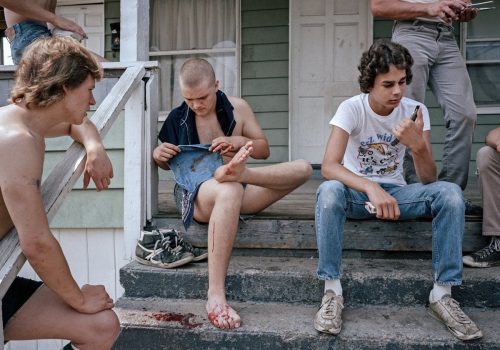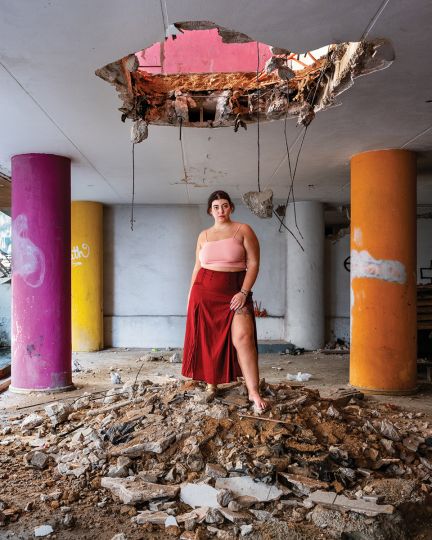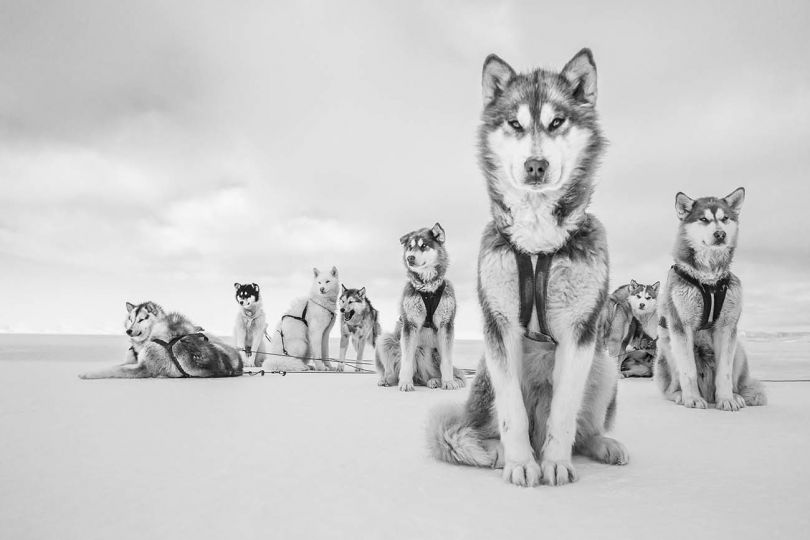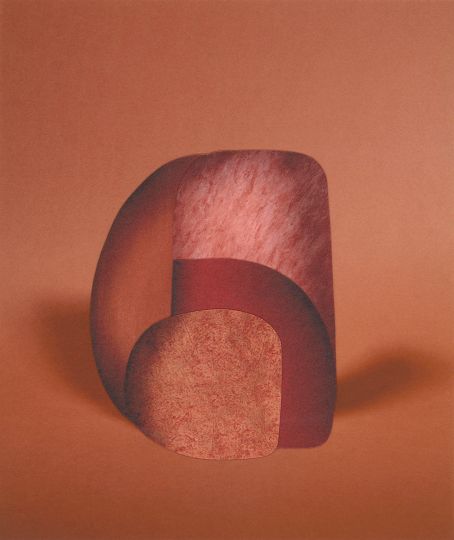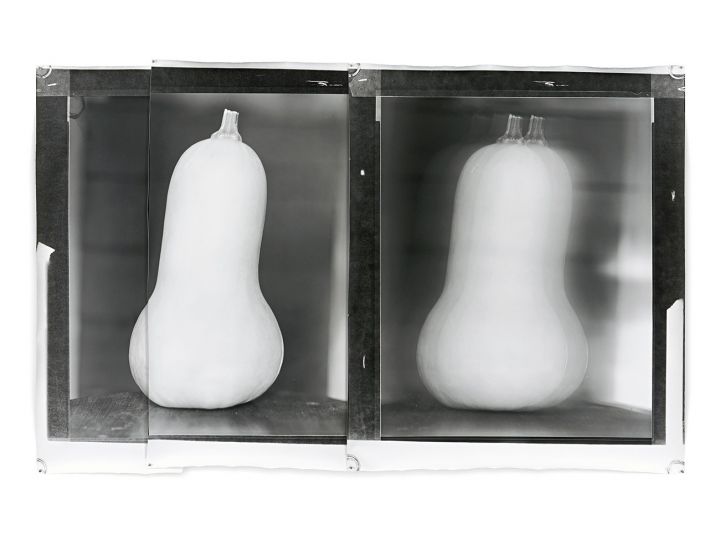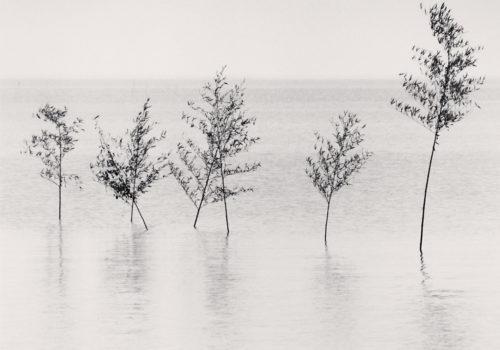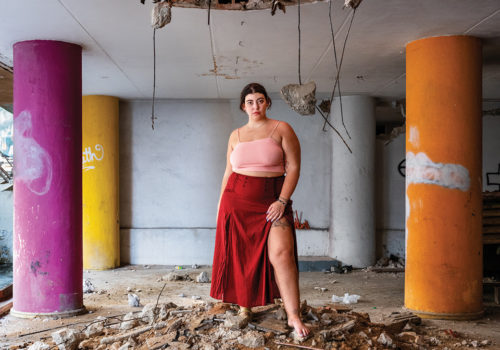A significant work in the history of American photography has just been rediscovered. After a first exhibition in Europe at the Forum für Fotografie in Cologne, the works of the photographer Mary Frey are presented at the National Audiovisual Center (NAC) in Dudelange. His images take us to a small town in western Massachusetts, in the heart of America in the 1970s and 1980s. From the first glance, they reveal their artistic discourse with the great precursors of American photography. .
In 1991, Peter Galassi organized an exhibition at MoMA in New York entitled “Pleasures and terrors of domestic comfort”. His catalog is now similar to a compendium of “New American Photography”, as it brings together renowned photographers: Philip Lorca DiCorcia, William Eggleston, Gregory Crewdson, Cindy Sherman, Nan Goldin, Tina Barney, Joel Sternfeld, Nicholas Nixon, Lee Friedlander, Stephen Shore, Larry Sultan, Robert Adams, Larry Fink, Sally Man and … Mary Frey.
Mary Frey has marked generations of students from 1979 to 2015 as a professor at Hartford Art School. If, after this exposure to MoMA, she took part in numerous individual and collective exhibitions in the United States, she gave up all public representation on the art market after the birth of her child in order to devote herself to her work. family and her teaching activity.
It was not until the end of her academic career three years ago that Mary Frey regained the urge to submit her work to the discussion. The Forum für Fotografie in Cologne and the NAC came into contact with her work through the publisher Hannes Wanderer of Peperoni Books, whom she met during a workshop at the Hartford Art School Connecticut in Berlin. In 2017, Peperoni Books published Reading Raymond Carver, a collection of black-and-white images made by Frey between 1979 and 1983 and initially presented as Domestic Rituals. The book met with great success: shortly after its publication, he found himself in 2017 in the selection of the Paris Photo – Aperture Foundation PhotoBook Award for the “Best First PhotoBook” and appeared in a second edition. Mary Frey’s second book, Real Life Dramas, also published by Peperoni Books was released no later than September 2018.
Mary Frey’s artistic intention is to question the process of creating photographic documentations. What seems spontaneously captured is actually the product of a carefully thought out conceptual staging. Mary Frey herself explains that her intention is “to question the essence of photographic truth and to resort to the iconography of bourgeois mores to comment on social values and systems”.
In these two series of works, the artist confronts himself through a conceptual approach to family portraiture, introducing members of his own family, as well as friends and acquaintances of his neighborhood and those around him. acts and gatherings every day.
The fascination with these harmless daily scenes is due mainly to the attention to detail in the performance, as well as to the vitality and intimate atmosphere of the acts performed. The prosaic simplicity of the scenes gives the observer the sensation of being a direct part of them. This impression of passing moments and familiar intimacy blurs the distance with the observer, to whom the scenarios seem plausible without the need to question them.
Only a second look attentive to the photos of Mary Frey confirms it: the perfectionism of the composition and use of light and the virtuosity of chromatic harmonies can not result from the realism of the snapshot. On the contrary, the construction of the images is worked in the smallest details, expressing Frey’s first artistic creativity. Spontaneity is produced artificially, the result of a meticulously prepared catalog of scenes presenting as “prototypes” the actions, gestures and characters dear to Frey by means of a large format camera, a tripod and the diffuse light of single use flashes.
Faithful to her idea that “a photograph shows us what we know while concealing its own fiction,” Mary Frey submits the photographic product to a fundamental questioning of the conditions of meaning and truth immanent in photography.
The artist pays particular attention to the way in which memories and the contemporary context permeate our image of ourselves and our social system of values. So she frequently quotes influences from pop culture in her work. Mary Frey says she’s overtly influenced by the ubiquity of sitcoms and soap operas, pennies and magazines like Look,
LIFE and Good Housekeeping. She uses the situations she finds there as a stylistic starting point for her staging.
This is particularly the case with his black-and-white images, which recall the atmosphere and dynamics of a middle-class family in the United States in the 1970s and 1980s. In color photographs later made for Real Life Dramas, Mary Frey will go one step further by thwarting her work with short excerpts of texts from the context of pop culture, giving the banality of everyday scenes an artistic dynamic.
The unity of initial meaning of a documentary image, which soon reveals itself to be a staging, is thus carried out ad absurdum, always a little further in the ironic refraction and in the game of paradoxical disorientation. Mary Frey unveils and problematizes an impassable gap between the photographic portrait and the inner psychic reality of the people photographed, without submitting to the paradox between image and identity.
In the manner of an iconologist who observes and studies a work of art based on historical analysis and as a witness of cultural phenomena, Mary Frey examines the inventory of images that she uses through the artistic process. The factually representable and the deliberately banal are only for the photographer the pretext of a reflection on the multidimensionality of psychic states and how to transmit them.
Gail Buckland summarizes this idea in an analysis of the artist’s work and a comparison with Diane Arbus, a great model of Mary Frey:
“Both wanted to enter private spaces and attend intimate moments. Both have crossed accepted limits, Arbus daring to “watch” those who live on the margins of society and break into the private world of transvestites, dwarves and the mentally ill, and Frey installing his device in rooms, bathrooms and kitchens of productive, middle-class, family-oriented Americans who did nothing out of the ordinary. The subject of Arbus resided in the appearance of people. Frey’s subject is what people think and how they relate to others. (See catalog of the Mary Frey Real Life Dramas exhibition, Western Carolina University, Cullowhee, NC, 1987).
Mary Frey – Real Life Dramas
from 13 July to 25 November 2019
National Audiovisual Center (NAC) 1B rue du Centenaire
L-3475 Dudelange – Luxembourg

